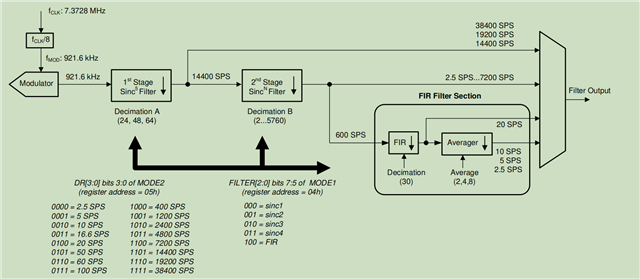
Hello, I have some questions to consult when using ADS1262:
1. As shown in the figure, why is it necessary to pass through a configurable SINC filter again to extract the required output rate after passing through the SINC5 filter, instead of directly extracting the output rate at SINC5?
2. On the basis of question one, I think that directly extracting to a lower output rate may incur significant hardware overhead, so cascading a sinc filter is necessary. However, I have seen in other products that only one SINC1 needs to be cascaded, but ADS1262 cascades a configurable SINC filter. Why is this?
3.On the basis of the previous question, I speculate that using configurable high-order filters can produce better notch effects when suppressing 50/60Hz, but I am not sure if it is correct. Secondly, when the data output rate is 2.5/5/10Hz, using high-order SINC filters can also produce good suppression effects at the beginning of 50/60Hz. Why do we still provide FIR filters for 50/60Hz suppression? Is it because FIR filters only require a single cycle stabilization time?
4. I haven't seen the transfer function or implementation principle of the FIR filter on ADS1262, so I'm not sure how to extract FIR from 600SPS to 20SPS while achieving 50/60Hz suppression.
These are some of the issues I encountered during use. Looking forward to your reply, thank you!
